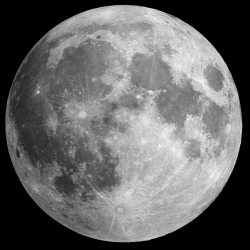
When physicists looks up at the night sky, they see the stars overhead. But what concerns them is what is unseen. Based upon different kinds of observations, such as how galaxies rotate and how they are flying apart, scientists say that 95 percent of the of the universe is made of up stuff we can’t see.
Of the universe’s mass, physicists say 27 percent is dark matter, and 68 percent is dark energy. And researchers have no idea what this stuff is or where to find it. Yet a scientist at NASA’s Jet Propulsion Laboratory has now provided a clue about where dark matter, and lots of it, might be found.
In a new study published in the Astrophysical Journal, Gary Prézeau has proposed that Earth and other planets and stars in the Milky Way galaxy are surrounded by theoretical filaments of dark matter called "hairs.” By finding the roots of these hairs, he reports, physicists could uncover a trove of dark matter.
If this all sounds exotic, it is, and a bit of explanation is in order. Gravity binds galaxies, but only to a point. The faster a galaxy rotates, the more gravity is required to hold everything together. And on average, stars rotate very quickly around the galactic core. In the Milky Way, for example, the rotational velocity is around 250 km/second for most stars. That’s equivalent to traveling to and from the moon in less than half an hour.
However, when astrophysicists count up all the normal matter in galaxies, primarily stars, there’s not nearly enough to hold them together. Instead, the galaxies should be flying apart. But they’re not, so scientists predict there must be large clumps of dark matter, which add enough gravity such that galaxies remain tightly bound.
Physicists have sought these clumps for decades, but because dark matter interacts only weakly with normal matter, it has proven difficult to detect. Not for lack of trying, scientists have looked for dark matter in space, they’ve tried to create it in large particle accelerators, and they’ve buried detectors deep beneath the ground to catch dark matter passing through the Earth. In 2011 they even launched the Alpha Magnetic Spectrometer to the International Space Station to study cosmic rays for signs of dark matter collisions.
So far, all of this searching has been to no avail. And while the experimental physicists have flailed about in the dark searching for dark matter, theoretical physicists have turned to their computer simulations. During the 1990s, theoretical physicists performed simulations and found that this dark matter could orbit galaxies like the Milky Way in fine-grained streams. Now Prézeau has taken this idea a step further and modeled what happens to this dark matter when it passes through star systems like our own solar system.
What he found is a bit like light coming into a telescope, Nick Suntzeff, an astrophysicist at Texas A&M University, told Ars. When a telescope points at a star, light still comes into the instrument from every direction, but the light coming from the star is moving along parallel lines with a strong signal. When a telescope focuses on a star, it is simply collecting only this parallel light. In his paper, Prézeau says the same thing happens with dark matter.
As it rotates around the galaxy, Earth periodically will pass through these spiraling filaments of dark matter, and the planet’s gravity will act to focus the dark matter, as a telescope focuses light. “However, the spherical Earth is a crappy lens, just as a glass ball is a crappy lens,” Suntzeff said. “The focused dark matter will not focus to a point, but will focus the stream at different distances from the Earth, creating what Prézeau calls ‘hairs.’”
As these dark matter streams pass through Earth, they should have “roots,” where the density of dark matter is about 1 billion times greater than average. According to his modeling, Prézeau said such roots would likely be around 1 million km away from Earth, or more than twice the distance of the Moon. Identifying the location of such a “root” would make a juicy target for a probe to detect and characterize dark matter, which has so far eluded scientists.
But could we really find these roots? Unfortunately, scientists don’t know where the streams are. However, they might be able to estimate how many there are and calculate the probability that a satellite at the correct distance from Earth will pass through a hair during a given year. Given a sufficiently high probability, NASA might even fund such a probe.
